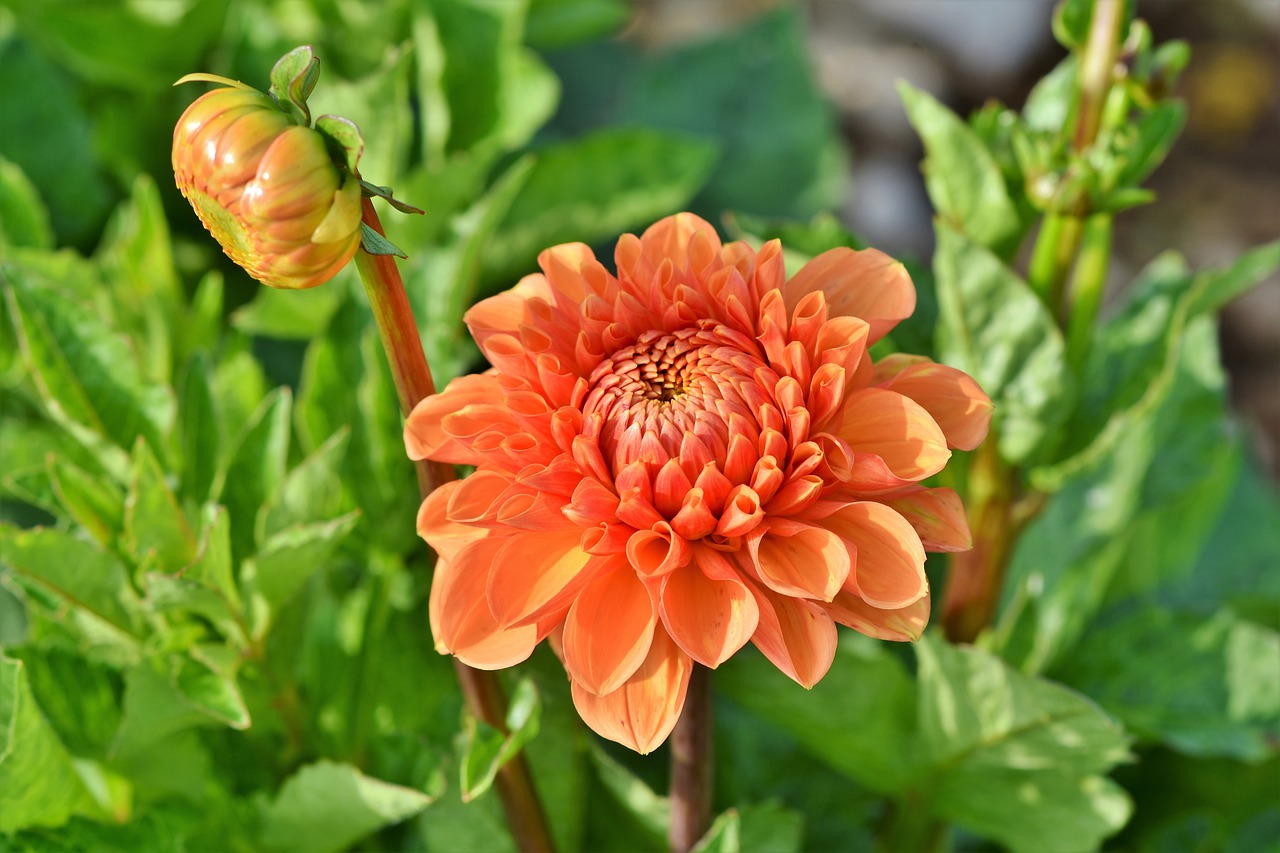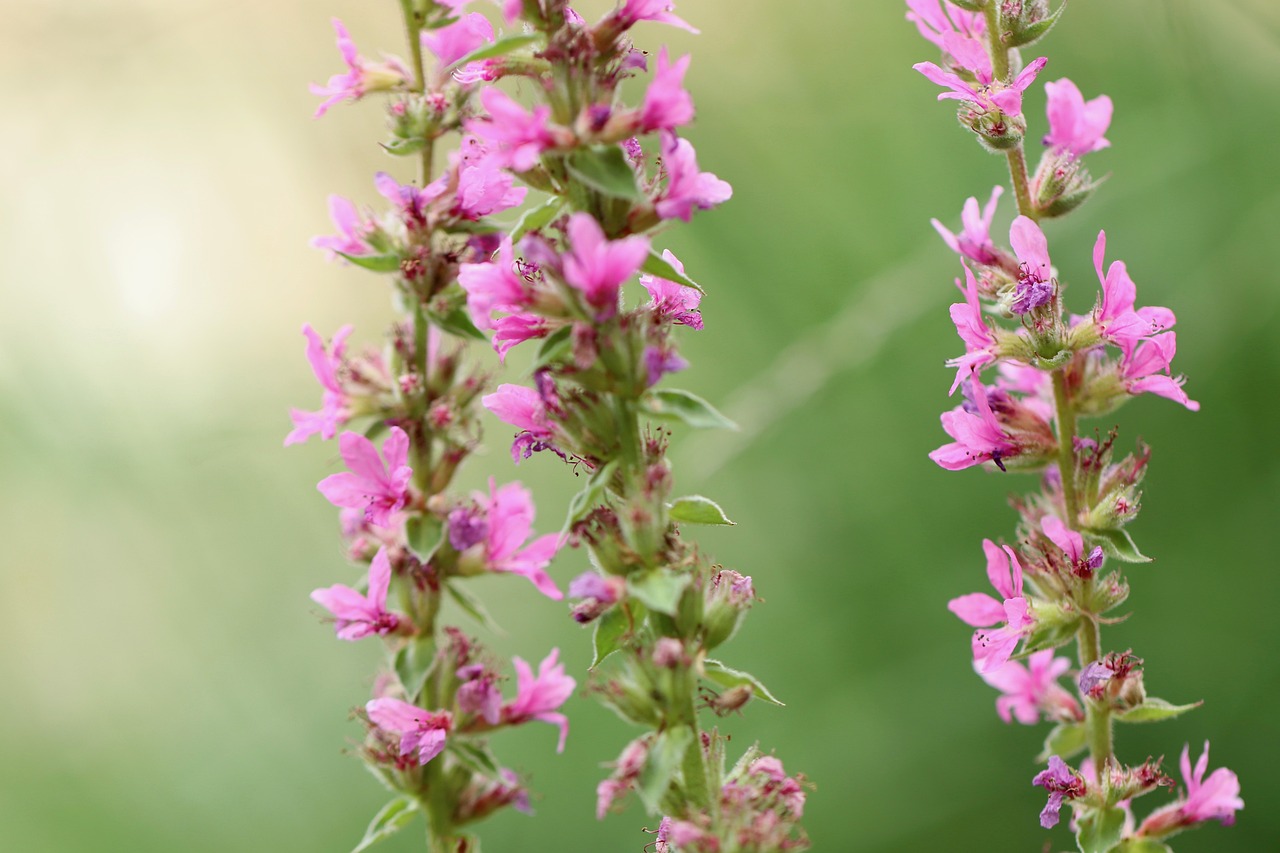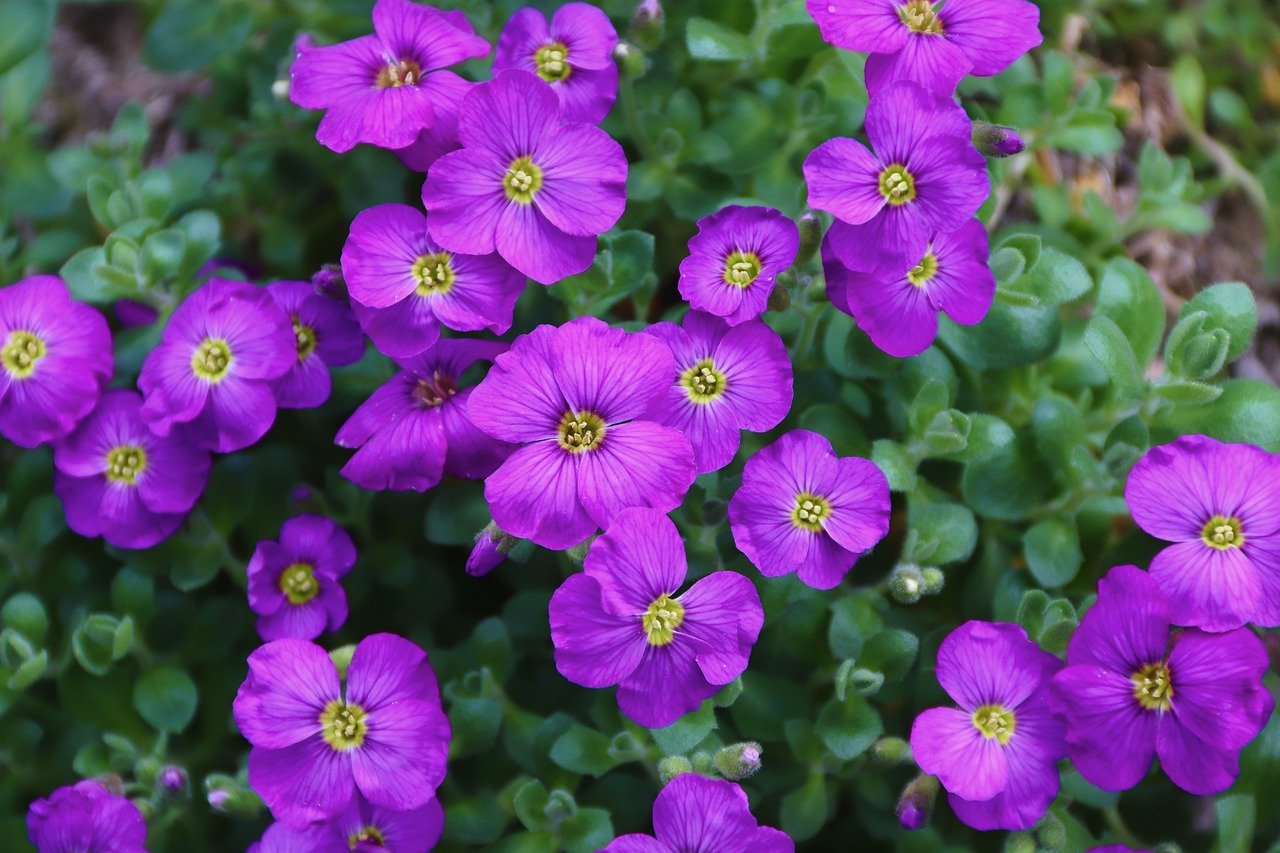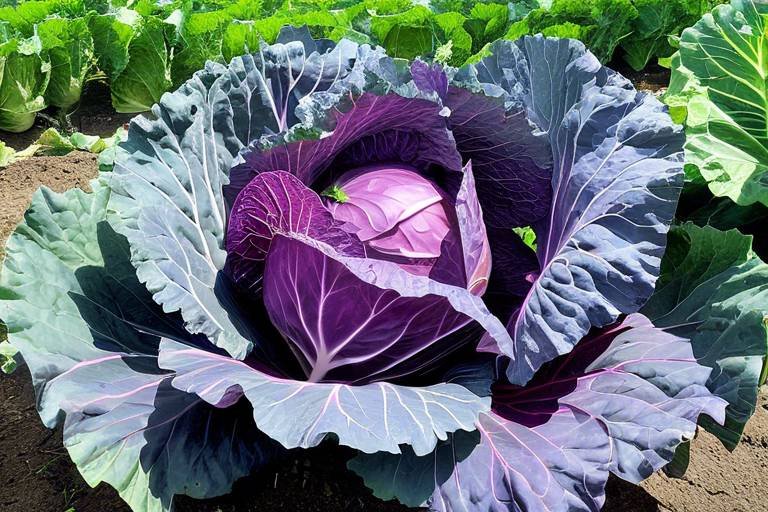How to Create a Garden for All Five Senses
Creating a garden that engages all five senses is a truly immersive experience that can elevate your outdoor space to a whole new level. By carefully selecting plants and design elements, you can transform your garden into a sensory oasis that delights visitors and enhances well-being.

Visual Appeal
Exploring the design and plant choices that engage sight, smell, touch, taste, and sound in a garden setting to create a sensory experience that appeals to all senses and enhances overall well-being.
In creating a garden that captivates all five senses, visual appeal plays a crucial role. By incorporating a diverse range of colors, shapes, and focal points, you can create a visually stimulating garden that not only captures attention but also provides a feast for the eyes. Imagine a canvas painted with vibrant hues and interesting patterns, each corner offering a new visual delight. It's like stepping into a living work of art where every plant and flower contributes to the overall masterpiece.

Fragrant Blooms
When it comes to creating a sensory garden that engages all five senses, the inclusion of fragrant blooms plays a crucial role in enhancing the olfactory experience. Fragrance has the unique ability to evoke memories, uplift moods, and add a layer of depth to the overall sensory journey within the garden.
Choosing the right flowers and plants with captivating scents is key to infusing the garden with delightful fragrances that can vary from sweet and floral to spicy and aromatic. Consider incorporating a mix of fragrant blooms such as roses, lavender, jasmine, and gardenias to create a diverse olfactory palette that evolves throughout the seasons.
Additionally, strategic placement of fragrant plants near seating areas or along pathways can ensure that visitors are enveloped in a cloud of delightful scents as they navigate through the garden. This sensory experience can transport individuals to different places and times, making the garden a truly immersive and memorable space.
To further enhance the olfactory journey, consider planting herbs like mint, basil, and thyme, which not only add fragrance but also offer the opportunity for visitors to engage their sense of taste through fresh culinary experiences. The combination of fragrant blooms and edible plants creates a multi-sensory experience that truly delights the senses and fosters a deeper connection with nature.

Texture and Touch
When it comes to creating a garden that engages the sense of touch, the key is diversity. Imagine walking through a garden where each plant offers a unique tactile experience – from the softness of lamb's ear leaves to the rough texture of tree bark. By incorporating a variety of plants with different textures and surfaces, you can create a sensory wonderland that invites visitors to explore through touch.
One effective way to introduce texture into your garden is by combining plants with contrasting surfaces. For example, pairing smooth, glossy leaves with fuzzy, velvety foliage creates an intriguing sensory contrast that encourages tactile exploration. Consider planting ornamental grasses alongside succulents to provide a range of textures that appeal to the sense of touch.
Another aspect to consider is the use of hardscaping elements to add texture to your garden design. Incorporating materials like rough stone pathways, smooth pebble borders, or rough wooden benches can further enhance the tactile experience and create interest for visitors as they interact with different surfaces throughout the garden.
Furthermore, the placement of plants with interesting textures in high-traffic areas or along pathways encourages interaction and engagement with the garden. Imagine running your fingers through the feathery fronds of a fern or brushing against the velvety petals of a lamb's ear plant as you stroll through the garden – these tactile experiences add depth and richness to the overall sensory journey.
Remember, the sense of touch is a powerful tool for connecting with nature and creating a truly immersive garden experience. By carefully selecting plants and hardscaping elements that offer a range of textures, you can design a garden that not only delights the eyes but also captivates the sense of touch, inviting visitors to explore and engage with nature on a deeper level.

Taste Sensations
Exploring the design and plant choices that engage sight, smell, touch, taste, and sound in a garden setting to create a sensory experience that appeals to all senses and enhances overall well-being.
When it comes to creating a garden that delights the sense of taste, integrating edible plants and herbs is key. Imagine strolling through your garden and plucking fresh herbs to add a burst of flavor to your culinary creations. From basil and mint to rosemary and thyme, the possibilities are endless. Not only do these edible plants offer a sensory treat for your taste buds, but they also add a touch of vibrancy and life to your outdoor space.

Harmonious Sounds
When it comes to creating a sensory garden that engages all five senses, the element of sound plays a crucial role in enhancing the overall experience. Incorporating harmonious sounds into the garden environment can significantly contribute to creating a tranquil and relaxing atmosphere that promotes well-being and mindfulness.
One way to introduce harmonious sounds into the garden is by incorporating elements such as wind chimes. These delicate and melodious instruments can create soothing tones as the wind gently moves through them, adding a musical quality to the outdoor space. The gentle tinkling of wind chimes can provide a sense of peace and serenity, creating a calming ambiance that invites visitors to unwind and connect with nature.
Water features are another excellent way to introduce harmonious sounds into the garden setting. The gentle bubbling of a fountain or the soothing trickle of a stream can create a sense of tranquility and relaxation. The sound of water has a therapeutic effect, promoting a sense of calm and helping to drown out unwanted noise from the surrounding environment.
In addition to wind chimes and water features, the rustling of leaves in the breeze can also contribute to the auditory experience of a sensory garden. The gentle rustling of leaves as the wind passes through the trees can create a natural symphony that adds depth and dimension to the garden's soundscape. This organic sound can evoke a sense of connection to the natural world and enhance the overall sensory experience.
By incorporating elements that produce harmonious sounds, such as wind chimes, water features, and rustling leaves, a sensory garden can create a peaceful and soothing auditory environment that complements the visual and tactile elements of the space. These sounds can help to create a sense of harmony and balance, inviting visitors to immerse themselves fully in the sensory delights of the garden.

Sensory Pathways
Sensory pathways in a garden play a crucial role in engaging visitors with all five senses, creating a truly immersive experience. Imagine strolling through a garden where each step offers a new sensory delight, from the vibrant colors catching your eye to the gentle rustling of leaves creating a calming soundtrack. These pathways guide you through a journey of sensory exploration, inviting you to touch, smell, taste, see, and hear the beauty of nature.
Designing sensory pathways involves careful consideration of plant placement, textures underfoot, and strategic placement of elements that stimulate the senses. By incorporating a variety of plants with different textures along the pathway, visitors are encouraged to reach out and feel the smoothness of a leaf or the roughness of a bark, adding a tactile dimension to the experience.
Strategic seating areas placed along the sensory pathways provide moments of pause and reflection, allowing visitors to fully immerse themselves in the sensory experience. These spots can offer views of blooming flowers, the sound of a bubbling fountain, or the fragrance of aromatic herbs, creating multi-sensory moments of tranquility.
Water features strategically placed along the pathways not only add visual interest but also contribute to the auditory experience, with the soothing sound of flowing water creating a sense of calm and relaxation. The gentle tinkling of wind chimes in the breeze adds another layer of auditory stimulation, enhancing the overall sensory journey.
As visitors meander through the garden along these sensory pathways, they are encouraged to engage with nature using all their senses, fostering a deeper connection with the outdoor space. Whether it's the crunch of gravel underfoot, the scent of blooming flowers in the air, or the taste of freshly picked herbs, sensory pathways offer a holistic experience that nourishes the mind, body, and soul.

Seasonal Variations
Exploring the design and plant choices that engage sight, smell, touch, taste, and sound in a garden setting to create a sensory experience that appeals to all senses and enhances overall well-being.
When it comes to creating a garden that stimulates all five senses, considering seasonal variations is crucial. Different plants bloom and evolve throughout the year, offering a diverse sensory experience that changes with the seasons. Imagine the vibrant colors of spring flowers, the refreshing scents of summer blooms, the crisp textures of autumn leaves, and the quiet tranquility of a winter garden dusted with snow.
By strategically selecting plants that thrive in each season, you can ensure that your garden remains visually captivating, fragrant, and engaging year-round. Creating a seasonal rotation plan can help you maximize the sensory appeal of your outdoor space and keep it dynamic and ever-changing.

Mindful Maintenance
Exploring the design and plant choices that engage sight, smell, touch, taste, and sound in a garden setting to create a sensory experience that appeals to all senses and enhances overall well-being.
Incorporating colors, shapes, and focal points to create a visually stimulating garden that captures attention and provides a feast for the eyes.
Selecting flowers and plants with captivating scents to infuse the garden with delightful fragrances that evoke memories and enhance the olfactory experience.
Choosing a variety of plants with different textures and surfaces to create a tactile experience that invites touch and exploration in the garden.
Integrating edible plants and herbs into the garden design to offer fresh flavors and culinary experiences that engage the sense of taste.
Incorporating elements like wind chimes, water features, and rustling leaves to create a soothing auditory environment that enhances relaxation and tranquility.
Designing pathways and seating areas that encourage visitors to interact with the garden through all five senses, creating a holistic sensory experience.
Exploring how different plants bloom and change throughout the seasons to create a garden that offers sensory delights year-round and evolves with the passage of time.
When it comes to maintaining a sensory garden, mindfulness is key. Regular pruning of plants to maintain their health and shape is essential. Adequate watering based on the specific needs of each plant ensures their vitality. Seasonal maintenance such as mulching and fertilizing helps in sustaining the garden's beauty and health throughout the year. Additionally, keeping an eye out for pests and diseases and taking prompt action is crucial to prevent any damage to the sensory elements of the garden.
Frequently Asked Questions
- What are the benefits of creating a garden for all five senses?
Creating a sensory garden offers a range of benefits, including promoting relaxation, reducing stress, enhancing well-being, and providing a space for mindfulness and reflection. Engaging all five senses in a garden setting can lead to a holistic sensory experience that rejuvenates the mind, body, and soul.
- How can I incorporate taste sensations into my sensory garden?
You can integrate taste sensations into your garden by planting edible plants, herbs, fruits, and vegetables. This not only adds a culinary element to your outdoor space but also allows you to enjoy fresh flavors, aromas, and textures right from your garden.
- What plants are ideal for creating a fragrant garden?
Plants such as lavender, roses, jasmine, gardenias, and herbs like mint, basil, and thyme are excellent choices for infusing your garden with delightful fragrances. These plants not only smell wonderful but also attract pollinators and add visual appeal to your garden.
- How can I design pathways to engage all five senses?
To create sensory pathways, consider using a variety of materials with different textures, incorporating aromatic plants along the path, adding wind chimes or water features for auditory stimulation, and including visually captivating elements to engage sight. These design elements can encourage visitors to interact with the garden using all their senses.



















